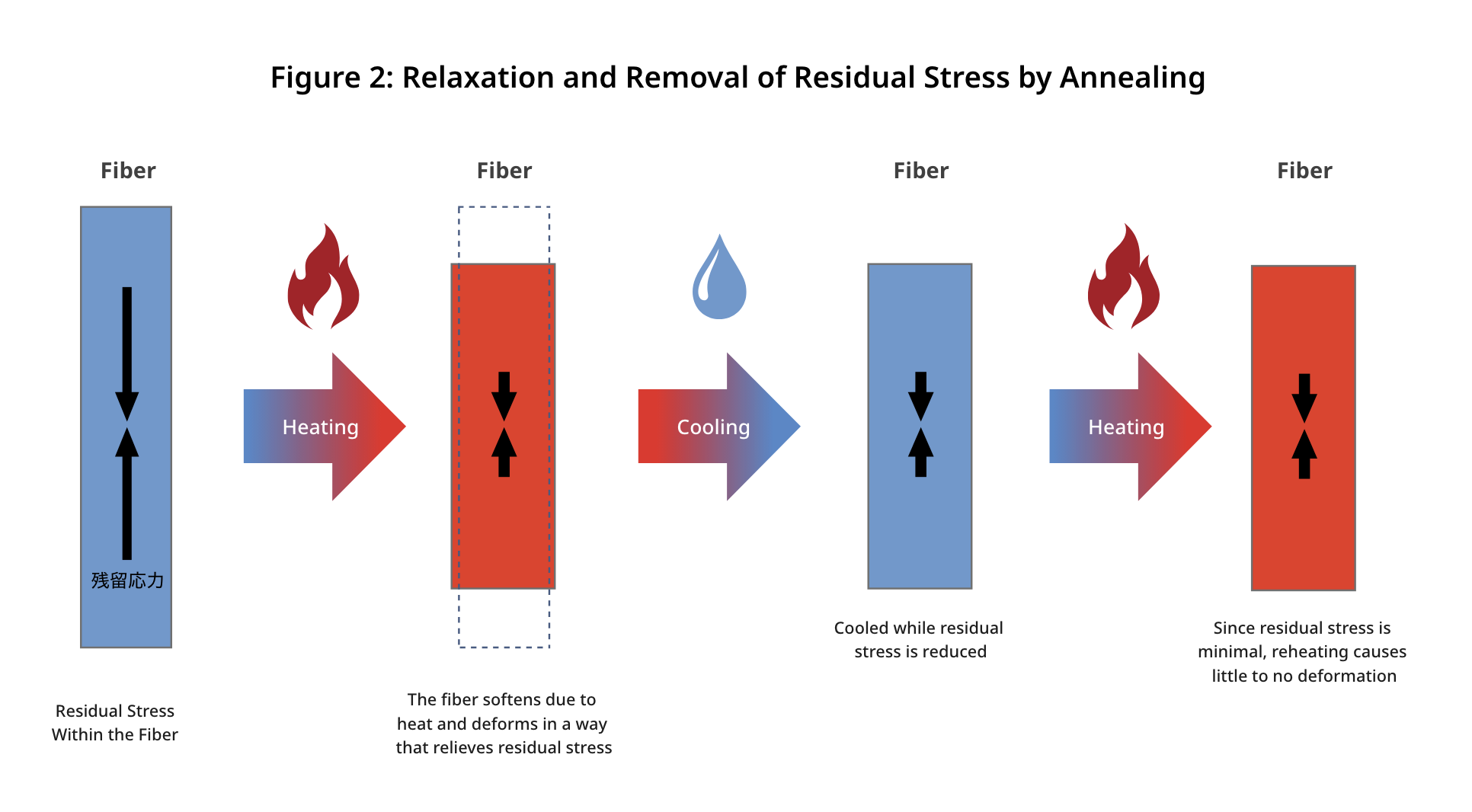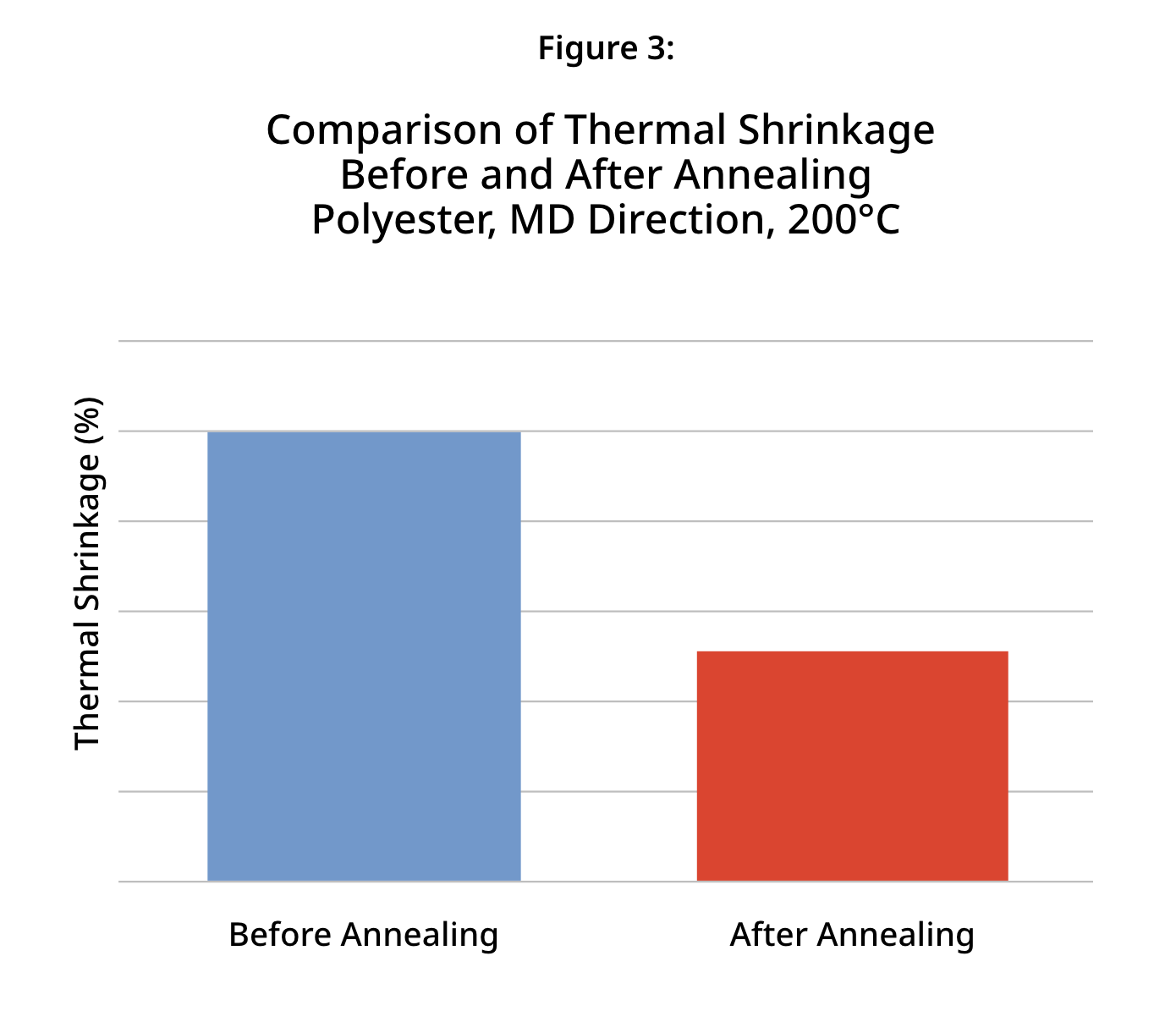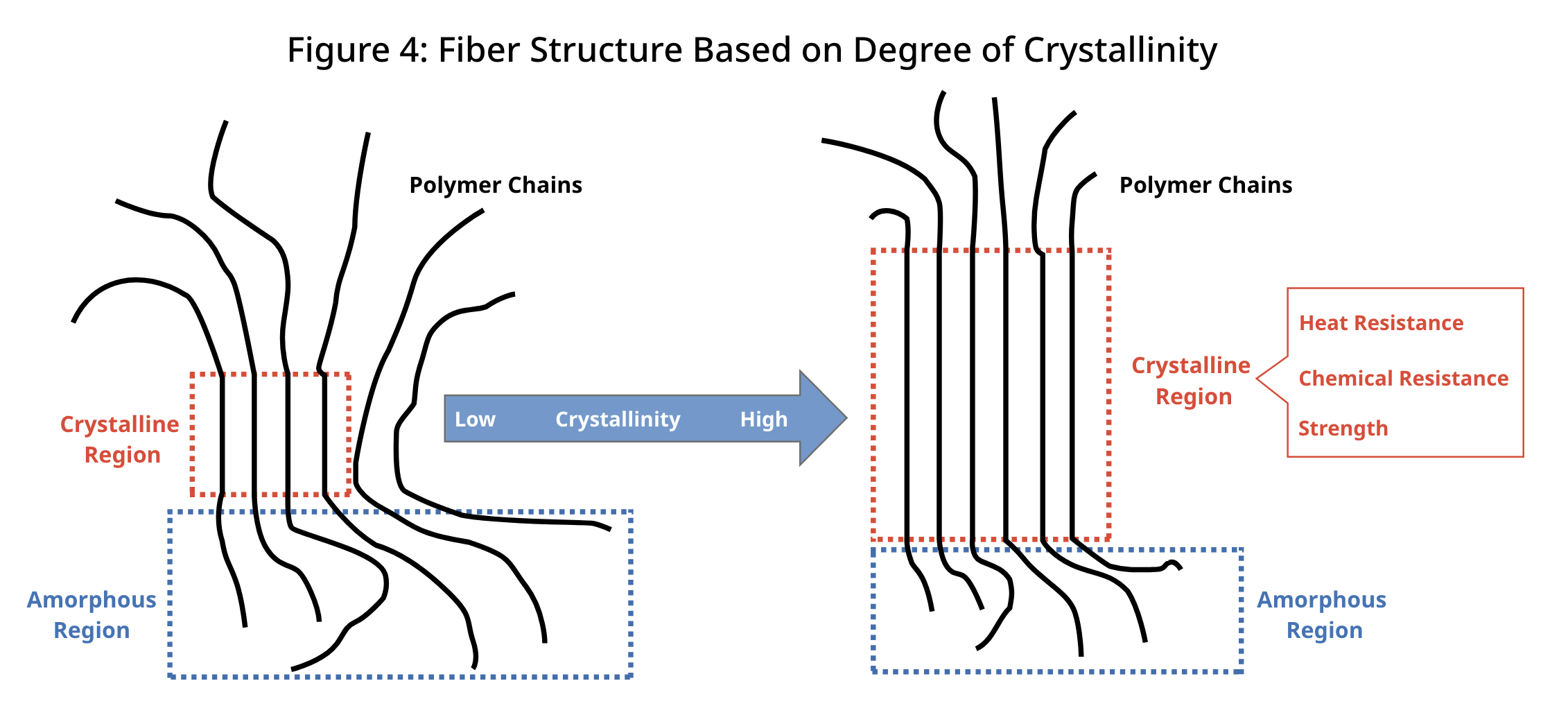Causes of Heat-Induced Fiber Shrinkage and Deformation, and Methods to Prevent Them
Have you ever had the experience of your clothes shrinking or becoming wrinkled after putting them in a dryer? Dryers use hot air to dry clothes, but because the fibers in clothing can deform or shrink when heated, the entire garment may end up shrinking or wrinkling as a result.
Similarly, nonwoven fabrics, which are made from fibers, can also shrink or deform when heated. In this article, we will explain the causes of heat-induced shrinkage and deformation in fibers, with nonwoven fabrics as an example, and discuss methods for suppressing such heat-induced changes.
Table of Contents
Reasons Why Fibers Deform or Shrink When Heated
There are six main factors that cause deformation and shrinkage in fibers due to heat:
- 1. Thermal expansion due to temperature change
- 2. Residual stress within the fiber
- 3. Softening of the fiber due to heat
- 4. Volume change due to moisture variation
- 5. Chemical reactions such as crosslinking
- 6. Density change due to crystallinity variation
Let’s take a closer look at each factor.
1. Thermal Expansion Due to Temperature Change
When heated, the polymers that make up the fibers experience increased molecular motion, resulting in expansion. Conversely, when cooled, molecular motion decreases, and volume contracts. This property is called “thermal expansion,” and the rate of dimensional change with temperature is referred to as the “coefficient of linear expansion.” Polymers generally have higher coefficients than metals or ceramics, which is why nonwoven fabrics made from polymer fibers may deform due to temperature changes.
| Comparison of Coefficients of Linear Expansion | |
|---|---|
| ×10-6 /℃ | |
| Iron | 12.1 |
| Copper | 16.6 |
| Aluminum | 23 |
| Glass | 9 |
| PET | 15 |
| PPS | 40 |
| PE/PP | 100 |
2. Residual Stress Within the Fiber
During the molding process of polymers, heating, pressing, and cooling occur. These processes may leave behind “residual stress.” Differences in temperature or pressure during cooling, or processing like drawing, can create compressive or tensile stresses within the fiber. These stresses may later be released through heating or time, causing shrinkage, warping, or even cracks, contributing to deformation or shrinkage of the fiber.

3. Softening of the Fiber Due to Heat
Thermoplastic polymers soften when heated and harden again upon cooling. If significant force is applied to the fiber while it is softened, deformation may occur.
4. Volume Change Due to Moisture
In hygroscopic materials, heating can reduce moisture content, leading to volume shrinkage.
5. Chemical Reactions Such as Crosslinking
Heating can trigger chemical reactions such as crosslinking in the polymer, changing the material’s density and causing shrinkage or deformation.
6. Density Change Due to Crystallinity Variation
Heat may alter the crystallinity of polymers, changing the density of the fiber and leading to deformation or shrinkage.
These are the main causes of fiber shrinkage. To suppress heat-induced shrinkage and deformation, a process known as “annealing” is often used. Let’s explore this in detail.
Suppressing Thermal Shrinkage and Deformation with Annealing
1. What Is Annealing?
Annealing is a heat treatment technique used to relieve or eliminate internal residual stress, improving deformation or shrinkage caused by such stress.
In annealing, the material is heated to a high temperature for a certain period and then slowly cooled to relax or eliminate residual stresses and strain. It can be applied to various materials including metals, polymers, and semiconductors, and is effective for polymer-based nonwoven fabrics as well.
2. Annealing Procedure
For crystalline polymers, the material is typically heated to or above the glass transition temperature (Tg), then slowly cooled. Heating above Tg can also crystallize amorphous regions, increasing crystallinity and resulting in more stable internal structures. This helps suppress dimensional changes and improves heat resistance and mechanical strength.
For amorphous polymers, heat treatment is generally performed below Tg to relax residual stresses.
In either case, properly setting the heating conditions (temperature and time) and cooling rate is essential to stabilize the material and enhance its dimensional stability, heat resistance, and strength—this is the principle behind annealing.

Effects of Annealing on Nonwoven Fabrics
Let’s now look at the specific effects of annealing on nonwoven fabrics. Annealing is performed in either batch or roll-to-roll systems, using heat and cooling. Sometimes, the fabric is treated under tension or fixed dimensions to limit shrinkage and alter internal structure only.
Annealing nonwoven fabrics is expected to offer the following four major benefits:
- 1. Improved dimensional stability
- 2. Enhanced heat resistance
- 3. Improved strength, flexibility, and abrasion resistance
- 4. Improved chemical resistance and environmental durability
Let’s examine each in detail.
1. Improved Dimensional Stability
Figure 3 compares the thermal shrinkage of nonwoven fabrics before and after annealing. Annealing significantly reduces shrinkage, making the fabric less likely to contract under heat.

Annealing results in nonwoven fabrics that maintain their shape even under high temperatures, reducing defects such as shrinkage, wrinkles, and curling during thermal processing. It also stabilizes the fiber dimensions, which helps maintain properties such as pore size in industrial filters and ensures consistent filtration performance.
2. Enhanced Heat Resistance
For nonwoven fabrics made from crystalline polymers, annealing increases fiber crystallinity, improving their heat resistance and overall thermal performance.
3. Improved Strength, Flexibility, and Abrasion Resistance
As fiber crystallinity increases, so does the strength of the fiber, enhancing tensile, tear, and bending strength of the nonwoven fabric. Relaxing residual stress also contributes to better mechanical strength.
4. Improved Chemical Resistance and Environmental Durability
Crystalline polymers are generally more resistant to chemicals because their crystalline regions are less permeable. Annealing improves crystallinity, which enhances resistance to acids, alkalis, and organic solvents. It also suppresses molecular movement, reducing chemical degradation such as oxidation or hydrolysis.
Furthermore, removing residual stress improves environmental durability, such as brittleness or discoloration caused by UV rays, temperature, or humidity.
In short, annealed nonwoven fabrics tend to be more resistant to chemical and environmental stress than untreated ones. If long-term stability is required, annealing is a highly recommended process.
Precautions for Annealing
While annealing offers various benefits such as improved dimensional stability, heat resistance, and chemical durability, some precautions are necessary.
One concern is the risk of overprocessing. Excessive heating or prolonged treatment can lead to discoloration or reduced mechanical strength. The uniformity of the fabric is also crucial; non-uniform fabrics may experience uneven heating, leading to deformation.
In roll-to-roll annealing, heating method and tension control are also important factors.

To fully harness the benefits of annealing, it’s essential to maintain proper temperature, time, fabric uniformity, and processing conditions throughout the treatment.
Conclusion
Annealing is an additional processing step, but it significantly enhances the added value of nonwoven fabrics by improving their dimensional stability, heat resistance, durability, product life, and quality stability. With further development of nonwoven materials and optimization of annealing technologies, even higher-performance nonwovens are expected in the future.
At Hirose Paper Mfg. Co., Ltd., we utilize annealing technology to offer products that remain stable even under high temperatures. If you’re facing challenges related to thermal shrinkage, wrinkling, curling, dimensional instability, or need improved thermal or chemical resistance, feel free to contact us. Our team of specialists is ready to assist you.


